pytorch代码实现注意力机制之Flatten Attention
Flatten Attention
介绍:最新注意力Flatten Attention:聚焦的线性注意力机制构建视觉 Transformer
在将 Transformer 模型应用于视觉任务时,自注意力机制 (Self-Attention) 的计算复杂度随序列长度的大小呈二次方关系,给视觉任务的应用带来了挑战。各种各样的线性注意力机制 (Linear Attention) 的计算复杂度随序列长度的大小呈线性关系,可以提供一种更有效的替代方案。线性注意力机制通过精心设计的映射函数来替代 Self-Attention 中的 Softmax 操作,但是这种技术路线要么会面临比较严重的性能下降,要么从映射函数中引入额外的计算开销。
本文作者提出一种聚焦线性注意力机制 (Focused Linear Attention),力求实现高效率和高表达力。作者首先分析了是什么导致了线性注意力机制性能的下降?然后归结为了两个方面:聚焦能力 (Focus Ability) 和特征丰富度 (Feature Diversity),然后提出一个简单而有效的映射函数和一个高效的秩恢复模块来增强自我注意的表达能力,同时保持较低的计算复杂度。
原文地址:FLatten Transformer: Vision Transformer using Focused Linear Attention

代码实现
import torch
import torch.nn as nn
import torch.nn.functional as F
from functools import partialfrom timm.data import IMAGENET_DEFAULT_MEAN, IMAGENET_DEFAULT_STD
from timm.models.helpers import load_pretrained
from timm.models.layers import DropPath, to_2tuple, trunc_normal_
from timm.models.registry import register_model
from einops.layers.torch import Rearrange
import torch.utils.checkpoint as checkpoint
import numpy as np
import time
from einops import rearrangedef _cfg(url='', **kwargs):return {'url': url,'num_classes': 1000, 'input_size': (3, 224, 224), 'pool_size': None,'crop_pct': .9, 'interpolation': 'bicubic','mean': IMAGENET_DEFAULT_MEAN, 'std': IMAGENET_DEFAULT_STD,'first_conv': 'patch_embed.proj', 'classifier': 'head',**kwargs}default_cfgs = {'cswin_224': _cfg(),'cswin_384': _cfg(crop_pct=1.0),}class Mlp(nn.Module):def __init__(self, in_features, hidden_features=None, out_features=None, act_layer=nn.GELU, drop=0.):super().__init__()out_features = out_features or in_featureshidden_features = hidden_features or in_featuresself.fc1 = nn.Linear(in_features, hidden_features)self.act = act_layer()self.fc2 = nn.Linear(hidden_features, out_features)self.drop = nn.Dropout(drop)def forward(self, x):x = self.fc1(x)x = self.act(x)x = self.drop(x)x = self.fc2(x)x = self.drop(x)return xclass LePEAttention(nn.Module):def __init__(self, dim, resolution, idx, split_size=7, dim_out=None, num_heads=8, attn_drop=0., proj_drop=0.,qk_scale=None):super().__init__()self.dim = dimself.dim_out = dim_out or dimself.resolution = resolutionself.split_size = split_sizeself.num_heads = num_headshead_dim = dim // num_heads# NOTE scale factor was wrong in my original version, can set manually to be compat with prev weightsself.scale = qk_scale or head_dim ** -0.5if idx == -1:H_sp, W_sp = self.resolution, self.resolutionelif idx == 0:H_sp, W_sp = self.resolution, self.split_sizeelif idx == 1:W_sp, H_sp = self.resolution, self.split_sizeelse:print("ERROR MODE", idx)exit(0)self.H_sp = H_spself.W_sp = W_spstride = 1self.get_v = nn.Conv2d(dim, dim, kernel_size=3, stride=1, padding=1, groups=dim)self.attn_drop = nn.Dropout(attn_drop)def im2cswin(self, x):B, N, C = x.shapeH = W = int(np.sqrt(N))x = x.transpose(-2, -1).contiguous().view(B, C, H, W)x = img2windows(x, self.H_sp, self.W_sp)x = x.reshape(-1, self.H_sp * self.W_sp, self.num_heads, C // self.num_heads).permute(0, 2, 1, 3).contiguous()return xdef get_lepe(self, x, func):B, N, C = x.shapeH = W = int(np.sqrt(N))x = x.transpose(-2, -1).contiguous().view(B, C, H, W)H_sp, W_sp = self.H_sp, self.W_spx = x.view(B, C, H // H_sp, H_sp, W // W_sp, W_sp)x = x.permute(0, 2, 4, 1, 3, 5).contiguous().reshape(-1, C, H_sp, W_sp) ### B', C, H', W'lepe = func(x) ### B', C, H', W'lepe = lepe.reshape(-1, self.num_heads, C // self.num_heads, H_sp * W_sp).permute(0, 1, 3, 2).contiguous()x = x.reshape(-1, self.num_heads, C // self.num_heads, self.H_sp * self.W_sp).permute(0, 1, 3, 2).contiguous()return x, lepedef forward(self, qkv):"""x: B L C"""q, k, v = qkv[0], qkv[1], qkv[2]### Img2WindowH = W = self.resolutionB, L, C = q.shapeassert L == H * W, "flatten img_tokens has wrong size"q = self.im2cswin(q)k = self.im2cswin(k)v, lepe = self.get_lepe(v, self.get_v)q = q * self.scaleattn = (q @ k.transpose(-2, -1)) # B head N C @ B head C N --> B head N Nattn = nn.functional.softmax(attn, dim=-1, dtype=attn.dtype)attn = self.attn_drop(attn)x = (attn @ v) + lepex = x.transpose(1, 2).reshape(-1, self.H_sp * self.W_sp, C) # B head N N @ B head N C### Window2Imgx = windows2img(x, self.H_sp, self.W_sp, H, W).view(B, -1, C) # B H' W' Creturn xclass FocusedLinearAttention(nn.Module):def __init__(self, dim, resolution, idx, split_size=7, dim_out=None, num_heads=8, attn_drop=0., proj_drop=0.,qk_scale=None, focusing_factor=3, kernel_size=5):super().__init__()self.dim = dimself.dim_out = dim_out or dimself.resolution = resolutionself.split_size = split_sizeself.num_heads = num_headshead_dim = dim // num_heads# NOTE scale factor was wrong in my original version, can set manually to be compat with prev weights# self.scale = qk_scale or head_dim ** -0.5if idx == -1:H_sp, W_sp = self.resolution, self.resolutionelif idx == 0:H_sp, W_sp = self.resolution, self.split_sizeelif idx == 1:W_sp, H_sp = self.resolution, self.split_sizeelse:print("ERROR MODE", idx)exit(0)self.H_sp = H_spself.W_sp = W_spstride = 1self.get_v = nn.Conv2d(dim, dim, kernel_size=3, stride=1, padding=1, groups=dim)self.attn_drop = nn.Dropout(attn_drop)self.focusing_factor = focusing_factorself.dwc = nn.Conv2d(in_channels=head_dim, out_channels=head_dim, kernel_size=kernel_size,groups=head_dim, padding=kernel_size // 2)self.scale = nn.Parameter(torch.zeros(size=(1, 1, dim)))self.positional_encoding = nn.Parameter(torch.zeros(size=(1, self.H_sp * self.W_sp, dim)))print('Linear Attention {}x{} f{} kernel{}'.format(H_sp, W_sp, focusing_factor, kernel_size))def im2cswin(self, x):B, N, C = x.shapeH = W = int(np.sqrt(N))x = x.transpose(-2, -1).contiguous().view(B, C, H, W)x = img2windows(x, self.H_sp, self.W_sp)# x = x.reshape(-1, self.H_sp * self.W_sp, C).contiguous()return xdef get_lepe(self, x, func):B, N, C = x.shapeH = W = int(np.sqrt(N))x = x.transpose(-2, -1).contiguous().view(B, C, H, W)H_sp, W_sp = self.H_sp, self.W_spx = x.view(B, C, H // H_sp, H_sp, W // W_sp, W_sp)x = x.permute(0, 2, 4, 1, 3, 5).contiguous().reshape(-1, C, H_sp, W_sp) ### B', C, H', W'lepe = func(x) ### B', C, H', W'lepe = lepe.reshape(-1, C // self.num_heads, H_sp * W_sp).permute(0, 2, 1).contiguous()x = x.reshape(-1, C, self.H_sp * self.W_sp).permute(0, 2, 1).contiguous()return x, lepedef forward(self, qkv):"""x: B L C"""q, k, v = qkv[0], qkv[1], qkv[2]### Img2WindowH = W = self.resolutionB, L, C = q.shapeassert L == H * W, "flatten img_tokens has wrong size"q = self.im2cswin(q)k = self.im2cswin(k)v, lepe = self.get_lepe(v, self.get_v)# q, k, v = (rearrange(x, "b h n c -> b n (h c)", h=self.num_heads) for x in [q, k, v])k = k + self.positional_encodingfocusing_factor = self.focusing_factorkernel_function = nn.ReLU()scale = nn.Softplus()(self.scale)q = kernel_function(q) + 1e-6k = kernel_function(k) + 1e-6q = q / scalek = k / scaleq_norm = q.norm(dim=-1, keepdim=True)k_norm = k.norm(dim=-1, keepdim=True)q = q ** focusing_factork = k ** focusing_factorq = (q / q.norm(dim=-1, keepdim=True)) * q_normk = (k / k.norm(dim=-1, keepdim=True)) * k_normq, k, v = (rearrange(x, "b n (h c) -> (b h) n c", h=self.num_heads) for x in [q, k, v])i, j, c, d = q.shape[-2], k.shape[-2], k.shape[-1], v.shape[-1]z = 1 / (torch.einsum("b i c, b c -> b i", q, k.sum(dim=1)) + 1e-6)if i * j * (c + d) > c * d * (i + j):kv = torch.einsum("b j c, b j d -> b c d", k, v)x = torch.einsum("b i c, b c d, b i -> b i d", q, kv, z)else:qk = torch.einsum("b i c, b j c -> b i j", q, k)x = torch.einsum("b i j, b j d, b i -> b i d", qk, v, z)feature_map = rearrange(v, "b (h w) c -> b c h w", h=self.H_sp, w=self.W_sp)feature_map = rearrange(self.dwc(feature_map), "b c h w -> b (h w) c")x = x + feature_mapx = x + lepex = rearrange(x, "(b h) n c -> b n (h c)", h=self.num_heads)x = windows2img(x, self.H_sp, self.W_sp, H, W).view(B, -1, C)return xclass CSWinBlock(nn.Module):def __init__(self, dim, reso, num_heads,split_size=7, mlp_ratio=4., qkv_bias=False, qk_scale=None,drop=0., attn_drop=0., drop_path=0.,act_layer=nn.GELU, norm_layer=nn.LayerNorm,last_stage=False,focusing_factor=3, kernel_size=5, attn_type='L'):super().__init__()self.dim = dimself.num_heads = num_headsself.patches_resolution = resoself.split_size = split_sizeself.mlp_ratio = mlp_ratioself.qkv = nn.Linear(dim, dim * 3, bias=qkv_bias)self.norm1 = norm_layer(dim)if self.patches_resolution == split_size:last_stage = Trueif last_stage:self.branch_num = 1else:self.branch_num = 2self.proj = nn.Linear(dim, dim)self.proj_drop = nn.Dropout(drop)assert attn_type in ['L', 'S']if attn_type == 'L':if last_stage:self.attns = nn.ModuleList([FocusedLinearAttention(dim, resolution=self.patches_resolution, idx=-1,split_size=split_size, num_heads=num_heads, dim_out=dim,qk_scale=qk_scale, attn_drop=attn_drop, proj_drop=drop,focusing_factor=focusing_factor, kernel_size=kernel_size)for i in range(self.branch_num)])else:self.attns = nn.ModuleList([FocusedLinearAttention(dim // 2, resolution=self.patches_resolution, idx=i,split_size=split_size, num_heads=num_heads // 2, dim_out=dim // 2,qk_scale=qk_scale, attn_drop=attn_drop, proj_drop=drop,focusing_factor=focusing_factor, kernel_size=kernel_size)for i in range(self.branch_num)])else:if last_stage:self.attns = nn.ModuleList([LePEAttention(dim, resolution=self.patches_resolution, idx=-1,split_size=split_size, num_heads=num_heads, dim_out=dim,qk_scale=qk_scale, attn_drop=attn_drop, proj_drop=drop)for i in range(self.branch_num)])else:self.attns = nn.ModuleList([LePEAttention(dim // 2, resolution=self.patches_resolution, idx=i,split_size=split_size, num_heads=num_heads // 2, dim_out=dim // 2,qk_scale=qk_scale, attn_drop=attn_drop, proj_drop=drop)for i in range(self.branch_num)])mlp_hidden_dim = int(dim * mlp_ratio)self.drop_path = DropPath(drop_path) if drop_path > 0. else nn.Identity()self.mlp = Mlp(in_features=dim, hidden_features=mlp_hidden_dim, out_features=dim, act_layer=act_layer,drop=drop)self.norm2 = norm_layer(dim)def forward(self, x):"""x: B, H*W, C"""H = W = self.patches_resolutionB, L, C = x.shapeassert L == H * W, "flatten img_tokens has wrong size"img = self.norm1(x)qkv = self.qkv(img).reshape(B, -1, 3, C).permute(2, 0, 1, 3)if self.branch_num == 2:x1 = self.attns[0](qkv[:, :, :, :C // 2])x2 = self.attns[1](qkv[:, :, :, C // 2:])attened_x = torch.cat([x1, x2], dim=2)else:attened_x = self.attns[0](qkv)attened_x = self.proj(attened_x)x = x + self.drop_path(attened_x)x = x + self.drop_path(self.mlp(self.norm2(x)))return xdef img2windows(img, H_sp, W_sp):"""img: B C H W"""B, C, H, W = img.shapeimg_reshape = img.view(B, C, H // H_sp, H_sp, W // W_sp, W_sp)img_perm = img_reshape.permute(0, 2, 4, 3, 5, 1).contiguous().reshape(-1, H_sp * W_sp, C)return img_permdef windows2img(img_splits_hw, H_sp, W_sp, H, W):"""img_splits_hw: B' H W C"""B = int(img_splits_hw.shape[0] / (H * W / H_sp / W_sp))img = img_splits_hw.view(B, H // H_sp, W // W_sp, H_sp, W_sp, -1)img = img.permute(0, 1, 3, 2, 4, 5).contiguous().view(B, H, W, -1)return imgclass Merge_Block(nn.Module):def __init__(self, dim, dim_out, norm_layer=nn.LayerNorm):super().__init__()self.conv = nn.Conv2d(dim, dim_out, 3, 2, 1)self.norm = norm_layer(dim_out)def forward(self, x):B, new_HW, C = x.shapeH = W = int(np.sqrt(new_HW))x = x.transpose(-2, -1).contiguous().view(B, C, H, W)x = self.conv(x)B, C = x.shape[:2]x = x.view(B, C, -1).transpose(-2, -1).contiguous()x = self.norm(x)return xclass CSWinTransformer(nn.Module):""" Vision Transformer with support for patch or hybrid CNN input stage"""def __init__(self, img_size=224, patch_size=16, in_chans=3, num_classes=1000, embed_dim=96, depth=[2, 2, 6, 2],split_size=[1, 2, 7, 7], la_split_size='1-2-7-7',num_heads=[2, 4, 8, 16], mlp_ratio=4., qkv_bias=True, qk_scale=None, drop_rate=0., attn_drop_rate=0.,drop_path_rate=0., hybrid_backbone=None, norm_layer=nn.LayerNorm, use_chk=False,focusing_factor=3, kernel_size=5, attn_type='LLLL'):super().__init__()# split_size = [1, 2, img_size // 32, img_size // 32]la_split_size = la_split_size.split('-')self.use_chk = use_chkself.num_classes = num_classesself.num_features = self.embed_dim = embed_dim # num_features for consistency with other modelsheads = num_headsself.stage1_conv_embed = nn.Sequential(nn.Conv2d(in_chans, embed_dim, 7, 4, 2),Rearrange('b c h w -> b (h w) c', h=img_size // 4, w=img_size // 4),nn.LayerNorm(embed_dim))curr_dim = embed_dimdpr = [x.item() for x in torch.linspace(0, drop_path_rate, np.sum(depth))] # stochastic depth decay ruleattn_types = [(attn_type[0] if attn_type[0] != 'M' else ('L' if i < int(attn_type[4:]) else 'S')) for i in range(depth[0])]split_sizes = [(int(la_split_size[0]) if attn_types[i] == 'L' else split_size[0]) for i in range(depth[0])]self.stage1 = nn.ModuleList([CSWinBlock(dim=curr_dim, num_heads=heads[0], reso=img_size // 4, mlp_ratio=mlp_ratio,qkv_bias=qkv_bias, qk_scale=qk_scale,split_size=split_sizes[i],drop=drop_rate, attn_drop=attn_drop_rate,drop_path=dpr[i], norm_layer=norm_layer,focusing_factor=focusing_factor, kernel_size=kernel_size,attn_type=attn_types[i])for i in range(depth[0])])self.merge1 = Merge_Block(curr_dim, curr_dim * 2)curr_dim = curr_dim * 2attn_types = [(attn_type[1] if attn_type[1] != 'M' else ('L' if i < int(attn_type[4:]) else 'S')) for i in range(depth[1])]split_sizes = [(int(la_split_size[1]) if attn_types[i] == 'L' else split_size[1]) for i in range(depth[1])]self.stage2 = nn.ModuleList([CSWinBlock(dim=curr_dim, num_heads=heads[1], reso=img_size // 8, mlp_ratio=mlp_ratio,qkv_bias=qkv_bias, qk_scale=qk_scale,split_size=split_sizes[i],drop=drop_rate, attn_drop=attn_drop_rate,drop_path=dpr[np.sum(depth[:1]) + i], norm_layer=norm_layer,focusing_factor=focusing_factor, kernel_size=kernel_size,attn_type=attn_types[i])for i in range(depth[1])])self.merge2 = Merge_Block(curr_dim, curr_dim * 2)curr_dim = curr_dim * 2attn_types = [(attn_type[2] if attn_type[2] != 'M' else ('L' if i < int(attn_type[4:]) else 'S')) for i in range(depth[2])]split_sizes = [(int(la_split_size[2]) if attn_types[i] == 'L' else split_size[2]) for i in range(depth[2])]temp_stage3 = []temp_stage3.extend([CSWinBlock(dim=curr_dim, num_heads=heads[2], reso=img_size // 16, mlp_ratio=mlp_ratio,qkv_bias=qkv_bias, qk_scale=qk_scale,split_size=split_sizes[i],drop=drop_rate, attn_drop=attn_drop_rate,drop_path=dpr[np.sum(depth[:2]) + i], norm_layer=norm_layer,focusing_factor=focusing_factor, kernel_size=kernel_size,attn_type=attn_types[i])for i in range(depth[2])])self.stage3 = nn.ModuleList(temp_stage3)self.merge3 = Merge_Block(curr_dim, curr_dim * 2)curr_dim = curr_dim * 2attn_types = [(attn_type[3] if attn_type[3] != 'M' else ('L' if i < int(attn_type[4:]) else 'S')) for i in range(depth[3])]split_sizes = [(int(la_split_size[3]) if attn_types[i] == 'L' else split_size[3]) for i in range(depth[3])]self.stage4 = nn.ModuleList([CSWinBlock(dim=curr_dim, num_heads=heads[3], reso=img_size // 32, mlp_ratio=mlp_ratio,qkv_bias=qkv_bias, qk_scale=qk_scale,split_size=split_sizes[i],drop=drop_rate, attn_drop=attn_drop_rate,drop_path=dpr[np.sum(depth[:-1]) + i], norm_layer=norm_layer, last_stage=True,focusing_factor=focusing_factor, kernel_size=kernel_size,attn_type=attn_types[i])for i in range(depth[-1])])self.norm = norm_layer(curr_dim)# Classifier headself.head = nn.Linear(curr_dim, num_classes) if num_classes > 0 else nn.Identity()trunc_normal_(self.head.weight, std=0.02)self.apply(self._init_weights)def _init_weights(self, m):if isinstance(m, nn.Linear):trunc_normal_(m.weight, std=.02)if isinstance(m, nn.Linear) and m.bias is not None:nn.init.constant_(m.bias, 0)elif isinstance(m, (nn.LayerNorm, nn.BatchNorm2d)):nn.init.constant_(m.bias, 0)nn.init.constant_(m.weight, 1.0)@torch.jit.ignoredef no_weight_decay(self):return {'pos_embed', 'cls_token'}def get_classifier(self):return self.headdef reset_classifier(self, num_classes, global_pool=''):if self.num_classes != num_classes:print('reset head to', num_classes)self.num_classes = num_classesself.head = nn.Linear(self.out_dim, num_classes) if num_classes > 0 else nn.Identity()self.head = self.head.cuda()trunc_normal_(self.head.weight, std=.02)if self.head.bias is not None:nn.init.constant_(self.head.bias, 0)def forward_features(self, x):B = x.shape[0]x = self.stage1_conv_embed(x)for blk in self.stage1:if self.use_chk:x = checkpoint.checkpoint(blk, x)else:x = blk(x)for pre, blocks in zip([self.merge1, self.merge2, self.merge3],[self.stage2, self.stage3, self.stage4]):x = pre(x)for blk in blocks:if self.use_chk:x = checkpoint.checkpoint(blk, x)else:x = blk(x)x = self.norm(x)return torch.mean(x, dim=1)def forward(self, x):x = self.forward_features(x)x = self.head(x)return xdef _conv_filter(state_dict, patch_size=16):""" convert patch embedding weight from manual patchify + linear proj to conv"""out_dict = {}for k, v in state_dict.items():if 'patch_embed.proj.weight' in k:v = v.reshape((v.shape[0], 3, patch_size, patch_size))out_dict[k] = vreturn out_dict### 224 modelsdef FLatten_CSWin_64_24181_tiny_224(pretrained=False, **kwargs):model = CSWinTransformer(patch_size=4, embed_dim=64, depth=[2, 4, 18, 1],split_size=[1, 2, 7, 7], num_heads=[2, 4, 8, 16], mlp_ratio=4., **kwargs)model.default_cfg = default_cfgs['cswin_224']return modeldef FLatten_CSWin_64_24322_small_224(pretrained=False, **kwargs):model = CSWinTransformer(patch_size=4, embed_dim=64, depth=[2, 4, 32, 2],split_size=[1, 2, 7, 7], num_heads=[2, 4, 8, 16], mlp_ratio=4., **kwargs)model.default_cfg = default_cfgs['cswin_224']return modeldef FLatten_CSWin_96_36292_base_224(pretrained=False, **kwargs):model = CSWinTransformer(patch_size=4, embed_dim=96, depth=[3, 6, 29, 2],split_size=[1, 2, 7, 7], num_heads=[4, 8, 16, 32], mlp_ratio=4., **kwargs)model.default_cfg = default_cfgs['cswin_224']return model### 384 modelsdef FLatten_CSWin_96_36292_base_384(pretrained=False, **kwargs):model = CSWinTransformer(patch_size=4, embed_dim=96, depth=[3, 6, 29, 2],split_size=[1, 2, 12, 12], num_heads=[4, 8, 16, 32], mlp_ratio=4., **kwargs)model.default_cfg = default_cfgs['cswin_384']return model
相关文章:

pytorch代码实现注意力机制之Flatten Attention
Flatten Attention 介绍:最新注意力Flatten Attention:聚焦的线性注意力机制构建视觉 Transformer 在将 Transformer 模型应用于视觉任务时,自注意力机制 (Self-Attention) 的计算复杂度随序列长度的大小呈二次方关系,给视觉任务…...
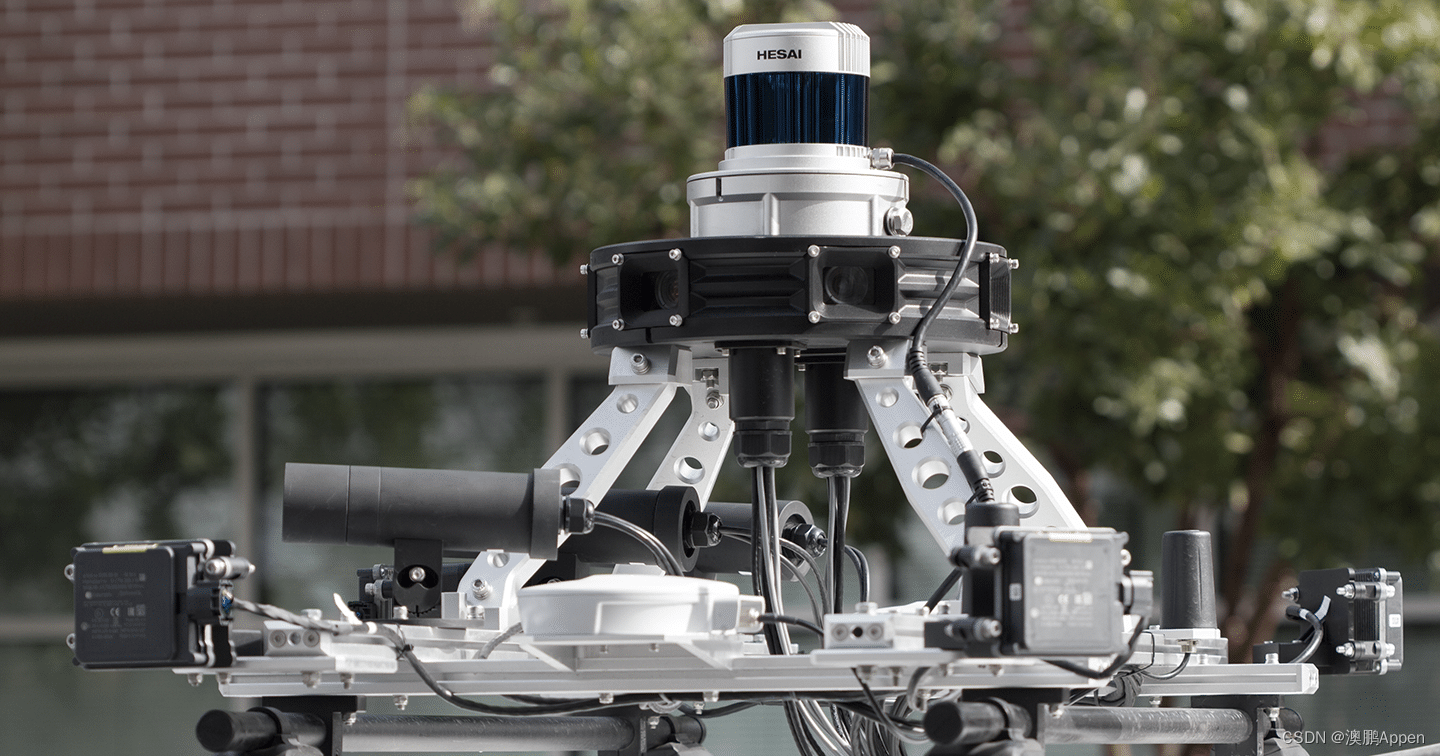
激光雷达和人工智能
几十年来,激光雷达一直是许多行业中非常有用的工具,但直到最近,随着人工智能(AI)解决方案的引入,我们才开始认识到它的真正潜力。激光雷达,又称光探测和测距,是一种遥感技术。它利用…...

【算法练习Day44】最长递增子序列最长连续递增序列最长重复子数组
📝个人主页:Sherry的成长之路 🏠学习社区:Sherry的成长之路(个人社区) 📖专栏链接:练题 🎯长路漫漫浩浩,万事皆有期待 文章目录 最长递增子序列最长连续递增…...
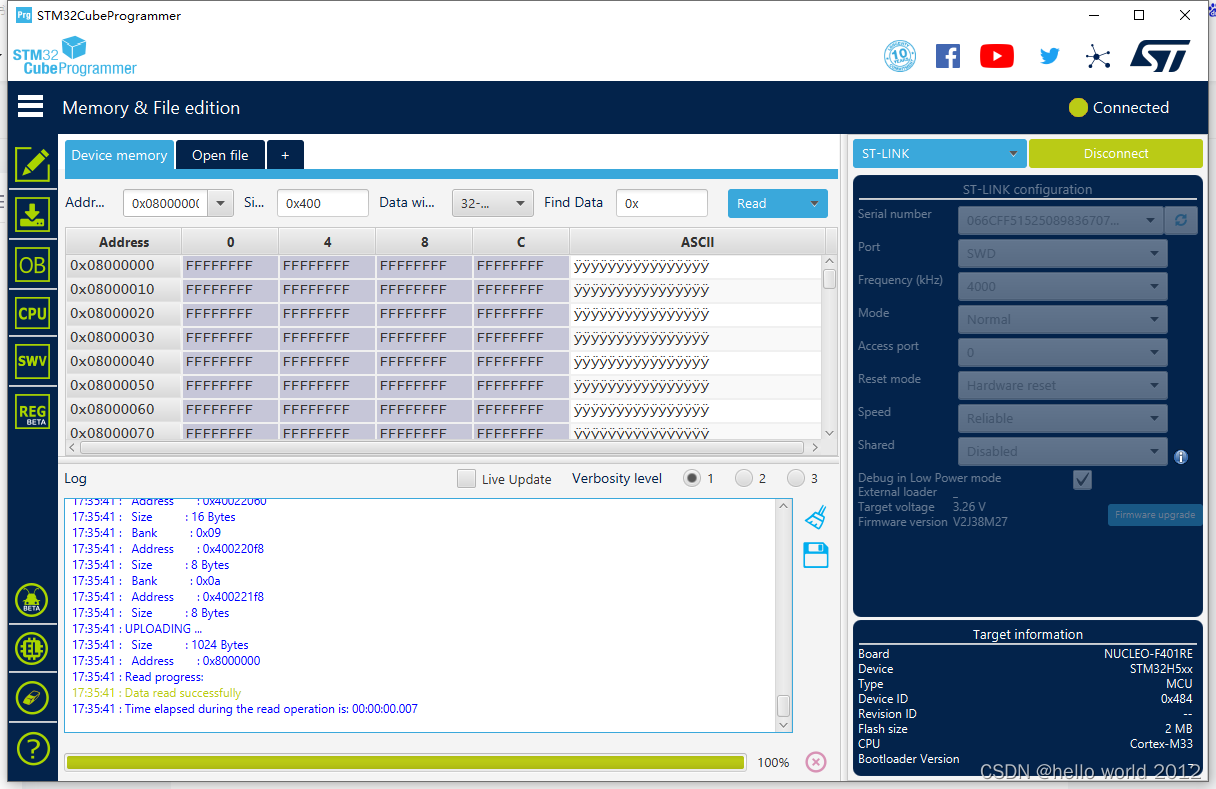
STM32H743XX/STM32H563XX芯片烧录一次后,再次上电无法烧录
近期在使用STM32H563ZIT6这款芯片在开发板上使用正常,烧录到自己打的板子就遇到了芯片烧录一次后,再次上电无法烧录的问题。 遇到问题需要从以下5点进行分析。 首先看下开发板的原理图 1.BOOT0需要拉高。 2.NRST脚在开发板上是悬空的。这里我建议大家…...

21. 合并两个有序链表 --力扣 --JAVA
题目 将两个升序链表合并为一个新的 升序 链表并返回。新链表是通过拼接给定的两个链表的所有节点组成的。 解题思路 判断特殊情况,如:两个列表中其中一个为空;创建一个初始节点用于返回;通过while循环来逐个遍历链表࿰…...

Linux 基本语句_10_进程
进程和程序的区别: 程序是一段静态的代码,是保存在非易失储存器上的制令和数据的有序集合,没有任何执行的概念;而进程是一个动态的概念,它是程序的一次执行过程,包括了动态创建、调度、执行和消亡的整个过程…...
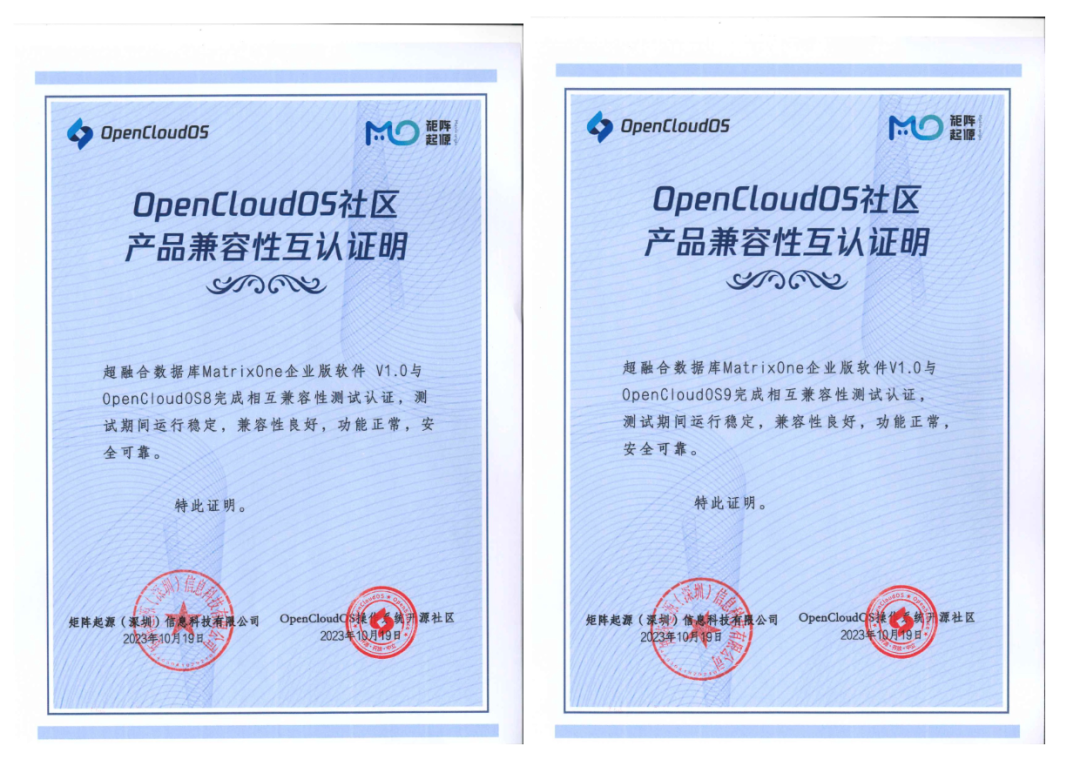
矩阵起源加入 OpenCloudOS 操作系统开源社区,完成技术兼容互认证
近日,超融合异构云原生数据库 MatrixOne企业版软件 V1.0 完成了与 OpenCloudOS 的相互兼容认证,测试期间,整体运行稳定,在功能、性能及兼容性方面表现良好。 一、产品简介 矩阵起源 MatrixOrigin 致力于建设开放的技术开源社区和…...

3D物理模拟和视觉特效软件SideFX Houdini mac中文介绍
SideFX Houdini for mac是一款3D物理模拟和视觉特效软件,几乎所有好莱坞特效电影里的物理模拟,包括碎裂,烟尘,碰撞,火焰,流体等模拟,都看得到它的身影。其独特的节点式操作方式,尤其…...

GPT-4.0网页平台-ChatYY
ChatYY的优势: 1. 支持大部分AI模型,且支持AI绘画: 2. 问答响应速度极快: 3. 代码解析: 4. 支持文档解读: 5. PC、移动端均支持: 访问直达:ChatYY.com...

mysql,redis导入导出数据库数据
mysql 导出数据 导出整个数据库: mysqldump -u 用户名 -p 数据库名 > 导出文件.sql 例如,如果你的用户名是 root,数据库名是 mydatabase,你可以运行以下命令: mysqldump -u root -p mydatabase > 导出文件.sql…...

conda修改虚拟环境名称
conda 修改虚拟环境名称 conda 不能直接更改名称,但是可以通过克隆环境解决 新建环境(克隆旧环境) conda create --name 新环境名 --clone 旧环境名 删除原环境 conda remove --name 旧环境名 --all 查看现有环境 conda env list conda i…...

c语言,将奇数和偶数分类
题目:输入一个整数数组,实现一个函数,来调整该数组中数字的顺序使得数组中所有的奇数位于数组的前半部分,所有偶数位于数组的后半部分。 思路:像冒泡排序那样,相邻两个数比较,两个都是偶数则不…...

前端设计模式之【观察者模式】
文章目录 前言介绍实现优缺点应用场景后言 前言 hello world欢迎来到前端的新世界 😜当前文章系列专栏:前端设计模式 🐱👓博主在前端领域还有很多知识和技术需要掌握,正在不断努力填补技术短板。(如果出现错误&#…...

HTTPS安全相关-通信安全的四个特性-ssl/tls
230-TLS是什么 1.http不安全 由于 HTTP 天生“明文”的特点,整个传输过程完全透明,任何人都能够在链路中截获、修改或者伪造请求 / 响应报文,数据不具有可信性 ; “代理服务”。它作为 HTTP 通信的中间人,在数据上下…...

并查集:Leetcode765 情侣牵手
n 对情侣坐在连续排列的 2n 个座位上,想要牵到对方的手。 人和座位由一个整数数组 row 表示,其中 row[i] 是坐在第 i 个座位上的人的 ID。情侣们按顺序编号,第一对是 (0, 1),第二对是 (2, 3),以此类推,最后…...
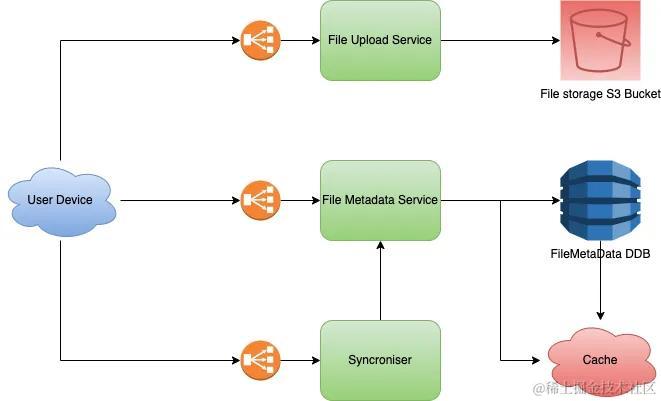
如何设计一个网盘系统的架构
1. 概述 现代生活中已经离不开网盘,比如百度网盘。在使用网盘的过程中,有没有想过它是如何工作的?在本文中,我们将讨论如何设计像百度网盘这样的系统的基础架构。 2. 系统需求 2.1. 功能性需求 用户能够上传照片/文件。用户能…...
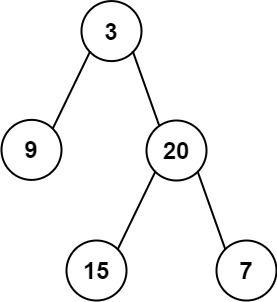
【代码随想录】算法训练计划17
1、 110.平衡二叉树 题目: 给定一个二叉树,判断它是否是高度平衡的二叉树。 本题中,一棵高度平衡二叉树定义为: 一个二叉树每个节点 的左右两个子树的高度差的绝对值不超过 1 。 思路: 经典后序遍历,感…...

“护肤品销售策略:从“免费拼团”到“3人回本大放送”“
有一个销售护肤品的团队,他们家399块钱一套的护肤品,他们在小程序这一个渠道,只用了23天的时间,就卖出去了2000多万的营业额,你敢信吗? 那么23天的时间,他们是怎么卖出去2000多万的呢࿱…...
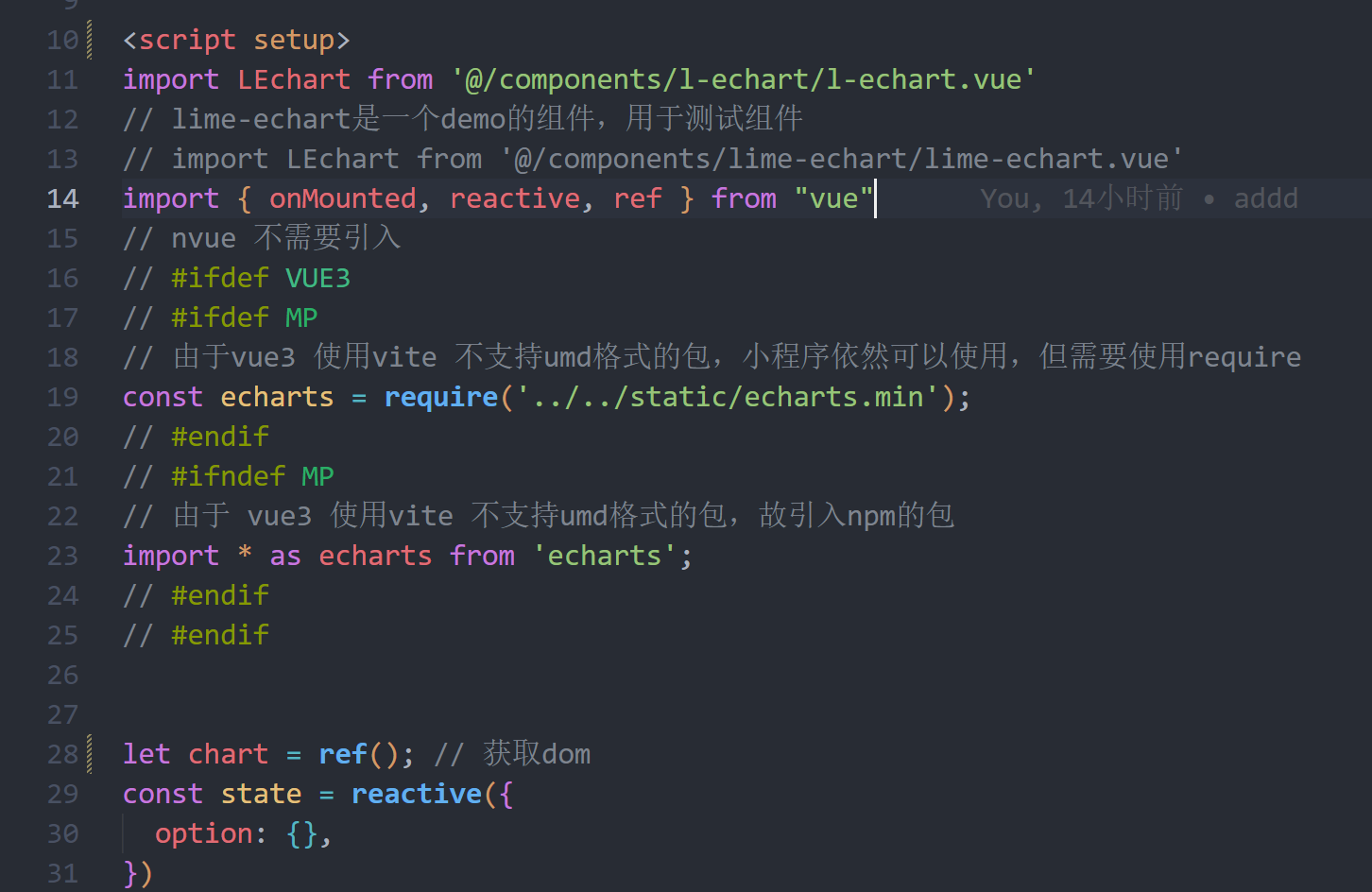
uniapp和vue3+ts开发小程序,使用vscode提示声明变量冲突解决办法
在uniapp中,我们可能经常会遇到需要在不用的环境中使用不同变量的场景,例如在VUE3中的小程序环境使用下面的方式导入echarts: const echarts require(../../static/echarts.min); 如果不是小程序环境则使用下面的方式导入echartsÿ…...

CCLink转Modbus TCP网关_MODBUS报文配置
兴达易控CCLink转Modbus TCP网关是一种功能强大的设备,可实现两个不同通信协议之间的无缝对接。它能够将CCLink协议转换为Modbus TCP协议,并通过报文配置实现灵活的通信设置。兴达易控CCLink转Modbus TCP网关可以轻松实现CCLink和Modbus TCP之间的数据转…...

生成xcframework
打包 XCFramework 的方法 XCFramework 是苹果推出的一种多平台二进制分发格式,可以包含多个架构和平台的代码。打包 XCFramework 通常用于分发库或框架。 使用 Xcode 命令行工具打包 通过 xcodebuild 命令可以打包 XCFramework。确保项目已经配置好需要支持的平台…...

[2025CVPR]DeepVideo-R1:基于难度感知回归GRPO的视频强化微调框架详解
突破视频大语言模型推理瓶颈,在多个视频基准上实现SOTA性能 一、核心问题与创新亮点 1.1 GRPO在视频任务中的两大挑战 安全措施依赖问题 GRPO使用min和clip函数限制策略更新幅度,导致: 梯度抑制:当新旧策略差异过大时梯度消失收敛困难:策略无法充分优化# 传统GRPO的梯…...
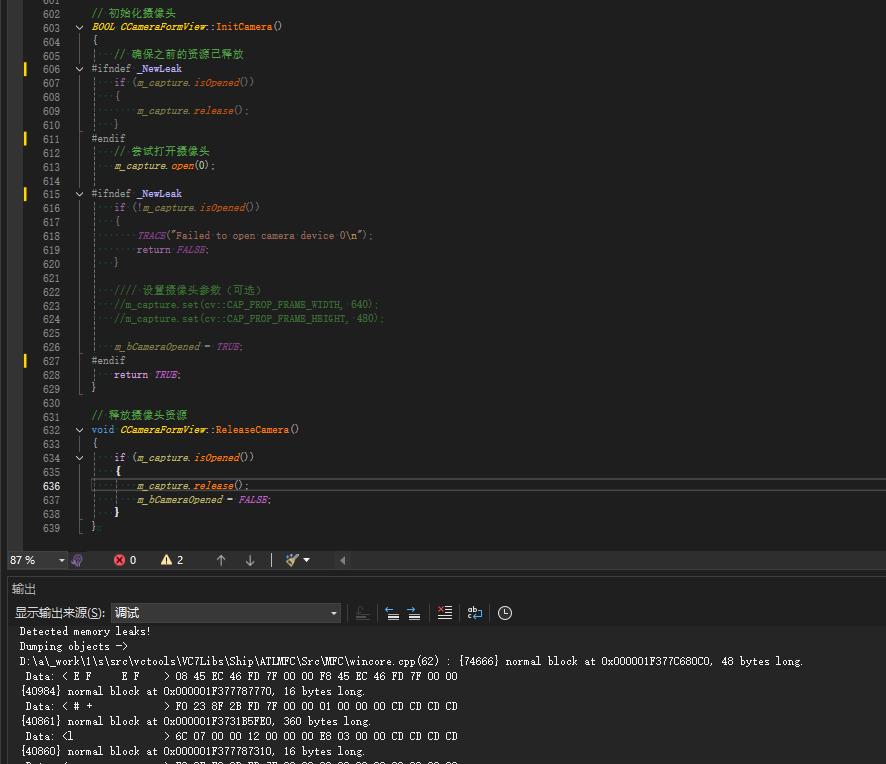
MFC内存泄露
1、泄露代码示例 void X::SetApplicationBtn() {CMFCRibbonApplicationButton* pBtn GetApplicationButton();// 获取 Ribbon Bar 指针// 创建自定义按钮CCustomRibbonAppButton* pCustomButton new CCustomRibbonAppButton();pCustomButton->SetImage(IDB_BITMAP_Jdp26)…...

【SpringBoot】100、SpringBoot中使用自定义注解+AOP实现参数自动解密
在实际项目中,用户注册、登录、修改密码等操作,都涉及到参数传输安全问题。所以我们需要在前端对账户、密码等敏感信息加密传输,在后端接收到数据后能自动解密。 1、引入依赖 <dependency><groupId>org.springframework.boot</groupId><artifactId...

反射获取方法和属性
Java反射获取方法 在Java中,反射(Reflection)是一种强大的机制,允许程序在运行时访问和操作类的内部属性和方法。通过反射,可以动态地创建对象、调用方法、改变属性值,这在很多Java框架中如Spring和Hiberna…...

什么是Ansible Jinja2
理解 Ansible Jinja2 模板 Ansible 是一款功能强大的开源自动化工具,可让您无缝地管理和配置系统。Ansible 的一大亮点是它使用 Jinja2 模板,允许您根据变量数据动态生成文件、配置设置和脚本。本文将向您介绍 Ansible 中的 Jinja2 模板,并通…...
:观察者模式)
JS设计模式(4):观察者模式
JS设计模式(4):观察者模式 一、引入 在开发中,我们经常会遇到这样的场景:一个对象的状态变化需要自动通知其他对象,比如: 电商平台中,商品库存变化时需要通知所有订阅该商品的用户;新闻网站中࿰…...

【HarmonyOS 5】鸿蒙中Stage模型与FA模型详解
一、前言 在HarmonyOS 5的应用开发模型中,featureAbility是旧版FA模型(Feature Ability)的用法,Stage模型已采用全新的应用架构,推荐使用组件化的上下文获取方式,而非依赖featureAbility。 FA大概是API7之…...

Java中栈的多种实现类详解
Java中栈的多种实现类详解:Stack、LinkedList与ArrayDeque全方位对比 前言一、Stack类——Java最早的栈实现1.1 Stack类简介1.2 常用方法1.3 优缺点分析 二、LinkedList类——灵活的双端链表2.1 LinkedList类简介2.2 常用方法2.3 优缺点分析 三、ArrayDeque类——高…...

HTML版英语学习系统
HTML版英语学习系统 这是一个完全免费、无需安装、功能完整的英语学习工具,使用HTML CSS JavaScript实现。 功能 文本朗读练习 - 输入英文文章,系统朗读帮助练习听力和发音,适合跟读练习,模仿学习;实时词典查询 - 双…...
